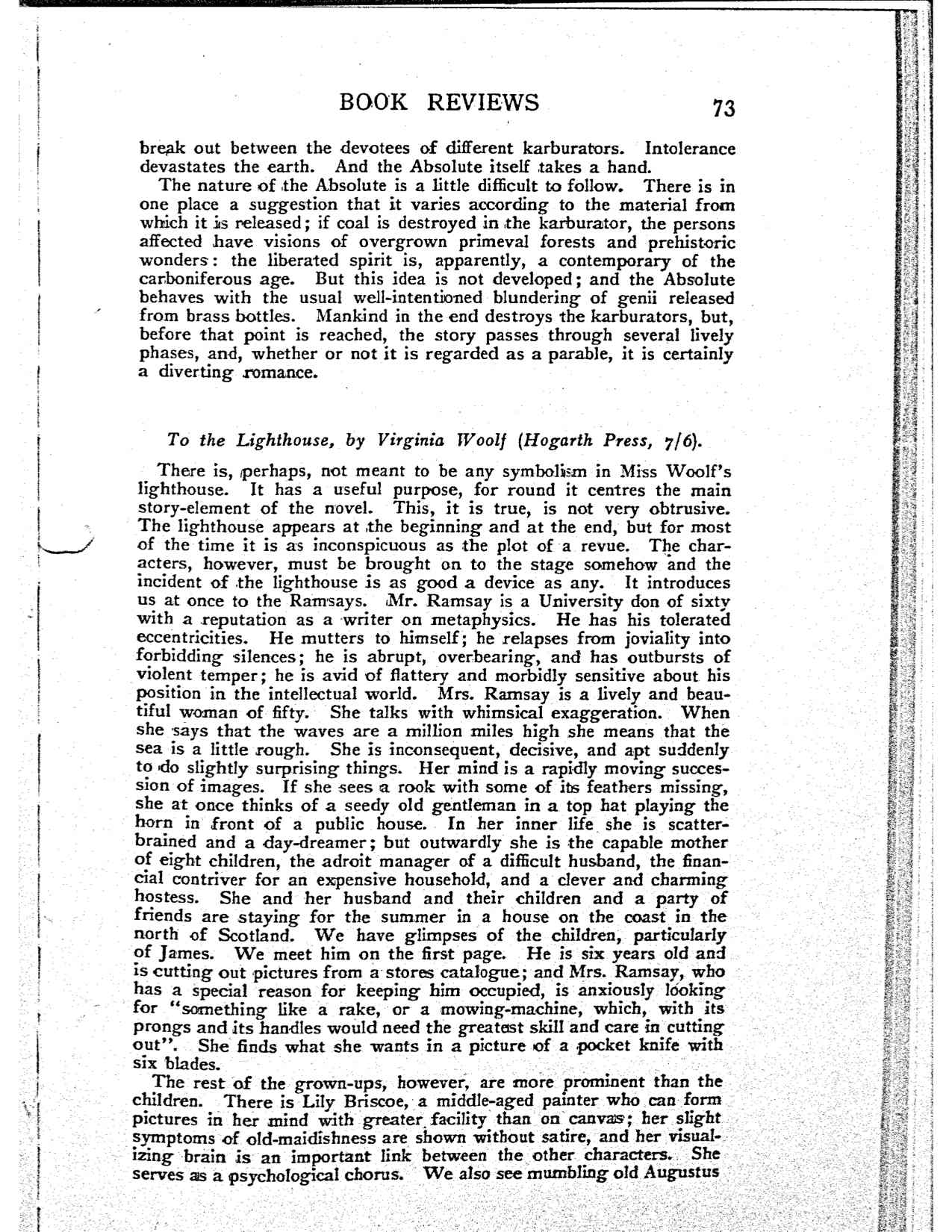
John Sydenham. The Empire Review. July 1927, pp.73-74.
To the Lighthouse, by Virginia Woolf (Hogarth Press, 7/6).
There is, perhaps, not meant to be any symbolism in Miss Woolf’s
lighthouse. It has a useful purpose, for round it centres the main
story-element of the novel. This, it is true, is not very obtrusive.
The lighthouse appears at the beginning and at the end, but for most
of the time it is as inconspicuous as the plot of a revue. The characters,
however, must be brought on to the stage somehow and the
incident of the lighthouse is as good a device as any. It introduces
us at once to the Ramsays. Mr. Ramsay is a University don of sixty
with a reputation as a writer on metaphysics. He has his tolerated
eccentricities. He mutters to himself; he relapses from joviality into
forbidding silences; he is abrupt, overbearing, and has outbursts of
violent temper; he is avid of flattery and morbidly sensitive about his
position in the intellectual world. Mrs. Ramsay is a lively and beautiful
woman of fifty. She talks with whimsical exaggeration. When
she says that the waves are a million miles high she means that the
sea is a little rough. She is inconsequent, decisive, and apt suddenly
to do slightly surprising things. Her mind is a rapidly moving succession
of images. If she sees a rook with some of its feathers missing,
she at once thinks of a seedy old gentleman in a top hat playing the
horn in front of a public house. In her inner life she is scatter-
brained and a day-dreamer; but outwardly she is the capable mother
of eight children, the adroit manager of a difficult husband, the financial
contriver for an expensive household, and a clever and charming
hostess. She and her husband and their children and a party of
friends are staying for the summer in a house on the coast in the
north of Scotland. We have glimpses of the children, particularly
of James. We meet him on the first page. He is six years old and
is cutting out pictures from a stores catalogue; and Mrs. Ramsay, who
has a special reason for keeping him occupied, is anxiously looking
for “something like a rake, or a mowing-machine, which, with its
prongs and its handles would need the greatest skill and care in cutting
out”. She finds what she wants in a picture of a pocket knife with
six blades.
The rest of the grown-ups, however, are more prominent than the
children. There is Lily Briscoe, a middle-aged painter who can form
pictures in her mind with greater facility than on canvas; her slight
symptoms of old-maidishness are shown without satire, and her visualizing
brain is an important link between the other characters. She
serves as a psychological chorus. We also see mumbling old Augustus






